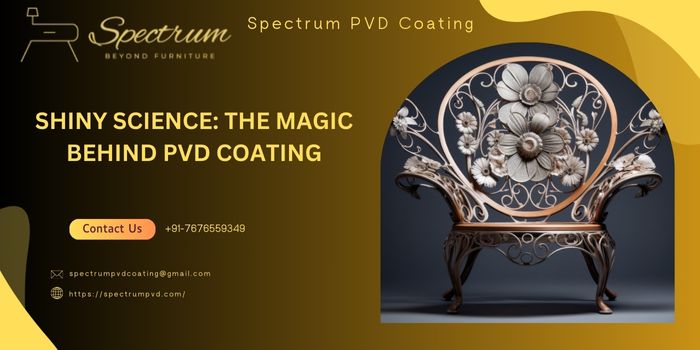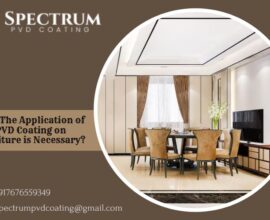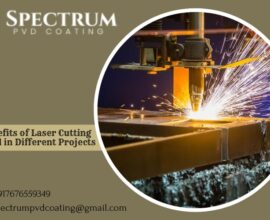Ever admired a gold-tinted faucet or a sleek, rainbow-colored phone case and wondered how it got that way? The answer might just be three little letters: PVD. This stylish surface treatment is everywhere, yet few understand the science—and art—behind it. Let’s pull back the curtain on the fascinating world of pvd decorative coatings.
What Is PVD Coating, Really?
Short for Physical Vapor Deposition, PVD coating is a high-tech process that transforms metal surfaces with stunning color, texture, and durability. Unlike painting or electroplating, PVD doesn’t just sit on the surface—it fuses with it. That’s why it lasts longer, looks sharper, and resists wear with superhero-like strength.
The process involves turning solid materials (like titanium or zirconium) into vapor in a vacuum chamber, then depositing them onto the target surface. The result? A thin, decorative, and incredibly hard layer that resists tarnishing, corrosion, and scratches like a champ.
Where You’ve Seen It—Even If You Didn’t Know
- Luxury watches with mirror-like finishes
- Stainless steel kitchen fittings that never seem to fade
- Modern smartphones with metallic color gradients
- Designer bathroom hardware in gold, black, rose gold, and more
These finishes are more than just pretty—they’re engineered for performance in high-touch environments. That’s what sets PVD apart in both industrial and decorative applications.
How the PVD Process Works (Without the Science Degree)
Think of it like this: you put your item into a special chamber, suck out all the air, crank up the heat, and blast metal targets with energy until they vaporize. That vapor lands on your item, forming a gorgeous, durable coating. Sounds like sci-fi? It kinda is.
Basic PVD Process in 4 Quick Steps:
- Preparation: The item is thoroughly cleaned—no oil, no dust, no excuses.
- Vacuum Chamber: The part enters a vacuum, removing air and contaminants.
- Vaporization: Metal targets are heated or ionized into vapor using techniques like arc evaporation or sputtering.
- Deposition: The vapor condenses on the product, forming a hard, decorative film.
It’s a dance of atoms that takes just minutes—but the result can last a lifetime.
Why Is PVD So Popular for Decorative Finishes?
It’s not just about looks—though, let’s be honest, the mirror-finish black and rose gold tones are downright irresistible. PVD delivers both beauty and brawn.
Benefits That Make PVD Coating a No-Brainer:
- Durability: Up to 10x harder than conventional finishes
- Eco-Friendly: No harmful chemicals or toxic waste, unlike electroplating
- Color Variety: Gold, gunmetal, bronze, rainbow—PVD can do it all
- Low Maintenance: Resistant to fingerprints, rust, and corrosion
For those considering a high-end kitchen renovation or rebranding a luxury product line, PVD is a game-changer. And if you’re wondering about the pvd coating price in bangalore, you’ll find it’s surprisingly competitive given the lasting quality and finish it offers.
Where PVD Really Shines (Pun Intended)
Today, PVD is being used in industries as diverse as aerospace and jewelry. But the fastest-growing demand is in consumer goods where aesthetic meets utility. Interior designers are swapping chrome for brushed PVD brass. Phone manufacturers are adding color without sacrificing durability. And architects are choosing PVD panels that stand up to harsh weather without losing their sheen.
Pro Tip: Choosing a PVD Finish
Always look for reputable applicators and ask what material was used for the coating (e.g., titanium nitride, zirconium nitride). It affects both color and wear performance. And while black and gold are classic, don’t sleep on emerging finishes like champagne bronze or satin nickel PVD—they’re the future of modern design.
FAQs
What materials can be PVD coated?
Most commonly, PVD is used on stainless steel, aluminum, titanium, and other metal alloys. With proper preparation, even glass and ceramics can be coated.
Is PVD coating scratch-resistant?
Yes, very much so. PVD coatings are significantly harder than conventional paint or electroplated finishes. While not completely scratch-proof, they offer superior resistance.
How long does a PVD coating last?
With proper care, PVD coatings can last 10–15 years or more, especially in indoor applications. In harsher environments, it still holds up better than traditional finishes.
Is PVD safe and environmentally friendly?
Absolutely. PVD uses no toxic chemicals and produces minimal waste, making it one of the most eco-conscious finishing methods available today.
Final Thoughts
PVD coating isn’t just a trend—it’s a revolution in how we finish and protect products. Whether you’re a designer, manufacturer, or just someone who appreciates a flawless finish, PVD offers a rare mix of beauty and durability. With its growing availability and expanding palette, expect to see a lot more of it in the everyday products you love (and touch).





